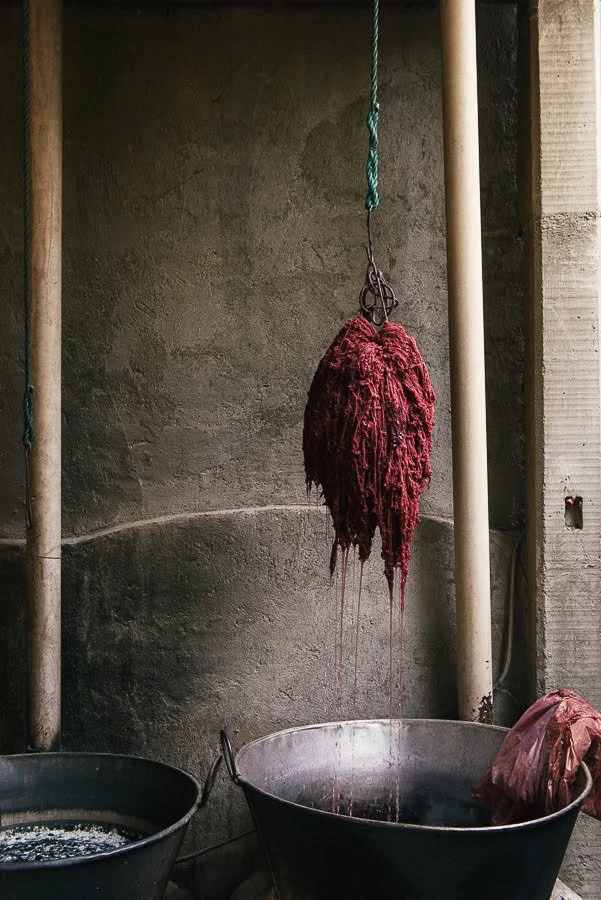
the process
Each natural dye requires its own unique method for bringing out the colors. It can take up to five months for some plants to mature or for trees to give fruit, and for insects to harvest. This needs to happen first before we can start to dye any material. The natural dye practice involves chemistry, alchemy, and a deep understanding of variations that a plant can have—such as the soil where it is grown, or the amount of rain it received—which will affect the final colors. To understand the depth of this practice, it can take a lifetime.
natural
dyes
the materials
Below is a list of dyes used by Porfirio Gutiérrez, notes on their preparation and the colors they produce. There are also two videos on specific dye stuffs—the first video features tree moss, pomegranate, pericón, sapote negro and oak wood; the second video features cochineal.
Oak Wood: Splintered oak logs can be soaked in room temperature water for a couple of days or boiled for 2 to 3 hours to produce a dye. Yarn color will be a light yellow.

